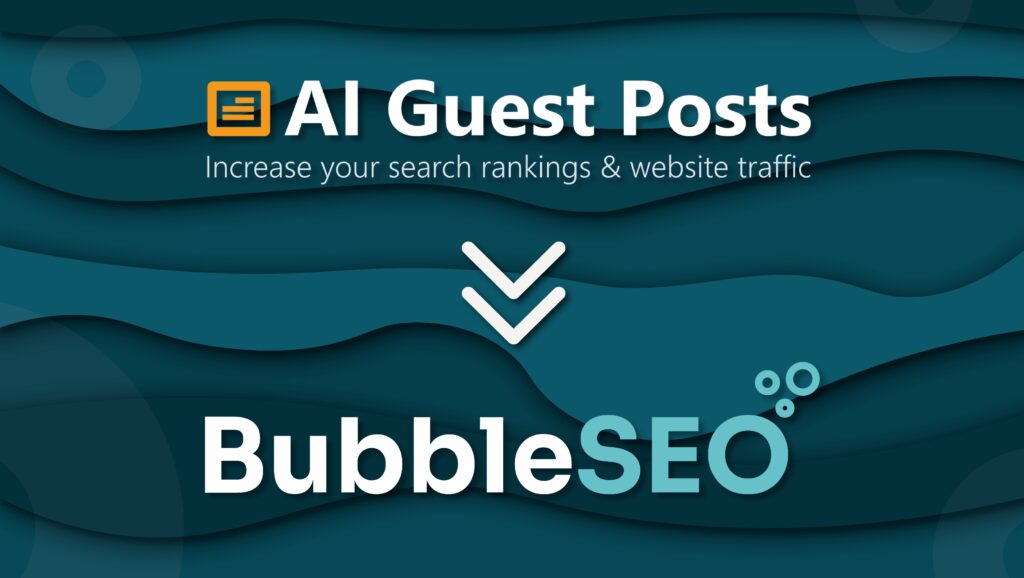
Included in article marketing should be useful, informative content

If you're new to SEO, navigating through its many layers can seem overwhelming. However, by following a clear, structured approach, you can start optimising your website and boosting your rankings effectively. Here's The Ultimate SEO Checklist for Beginners to help you understand the fundamentals and ensure you're on the right path to success. 1. Keyword Research Keywords form the foundation of any SEO strategy. Start by identifying the main keywords that are relevant to your business or niche. Tools like Google Keyword Planner, Ahrefs, or SEMrush can help you find high-traffic keywords with low competition. Target Long-Tail Keywords: These are more specific phrases that are less competitive and can help you capture targeted traffic. For example, instead of just "SEO," use "SEO for small businesses" or "SEO checklist for beginners." Understand User Intent: Ensure your keywords align with what your target audience is searching for, and use them naturally in your content. 2. On-Page SEO Optimisation Once you've identified your keywords, it's time to optimise your website pages. Title Tags: Include your primary keyword in the title tag, ideally at the beginning. Keep it under 60 characters. Meta Descriptions: Write compelling meta descriptions with your primary keyword to improve click-through rates (CTR). Header Tags: Use headers to structure your content, with the primary keyword in the H1 tag and related keywords in the H2 and H3 tags. Image Alt Text: Include keywords in the alt text of images to help search engines understand the context of your visuals. 3. Create High-Quality Content Content marketing is at the heart of SEO success. Focus on providing valuable, informative, and engaging content that resonates with your audience. Write for Humans First: Avoid keyword stuffing and prioritise creating helpful content that satisfies the needs of your readers. Use Keywords Naturally: Place your primary keyword in the first 100 words, and sprinkle related keywords throughout the text. However, keep the flow natural. Content-Length: While there’s no magic number, longer content (1000+ words) often ranks better, but only if it provides comprehensive value. Consistent Blogging: Regularly publish fresh blog posts on topics relevant to your audience, leveraging your target keywords. 4. Mobile Optimisation With mobile traffic now surpassing desktop, it’s critical that your website is optimised for mobile users. Responsive Design: Ensure your website is mobile-friendly and loads quickly on all devices. Fast Page Load Times: Use tools like Google PageSpeed Insights to check and improve your site’s speed. Slow sites can hurt both rankings and user experience. 5. Build Strong Backlinks Link building is essential for establishing your site's authority in your industry. The more high-quality backlinks (external sites linking to your content) you have, the better your chances of ranking higher in search results. Guest Posting: Write guest posts for reputable blogs within your niche and include backlinks to your site. This helps both SEO and brand visibility. Internal Linking: Link to other relevant content on your website to create a clear structure and boost page authority. Earn Editorial Links: Create high-quality, shareable content that others in your industry will naturally link to, such as guides, infographics, or data-driven reports. 6. Technical SEO Technical SEO ensures that your website is easy for search engines to crawl and index. Submit XML Sitemap: Make sure your site is indexed by submitting an XML sitemap to Google Search Console. Fix Broken Links: Use tools to identify and repair any broken links on your site, as they can hurt both user experience and SEO. Enable HTTPS: If your site doesn’t have an SSL certificate, secure it with HTTPS to protect users and improve rankings. 7. Track and Analyse Your Results SEO is an ongoing process. You need to monitor and measure your performance to see what’s working and what needs improvement. Use Google Analytics: Track your site’s traffic, top-performing pages, and where your visitors are coming from. Monitor Rankings: Regularly check how your keywords are ranking in search engines, and adjust your strategy accordingly. Watch Your Competitors: Keep an eye on competitors who rank well for your target keywords and analyse what they are doing right. By following this SEO checklist, beginners can set a strong foundation for long-term SEO success. From keyword research and content marketing to link building and technical SEO, each step is vital for improving your website’s rankings and visibility. Stay consistent, be patient, and continually refine your strategy as you track your results. With time and effort, you’ll start seeing the benefits of your SEO efforts!
If you’re new to SEO, navigating through its many layers can seem overwhelming. However, by following a clear, structured approach, you can start optimising your website and boosting your rankings effectively. Here’s The Ultimate SEO Checklist for Beginners to help you understand the fundamentals and ensure you’re on the right path to success.
Keywords form the foundation of any SEO strategy. Start by identifying the main keywords that are relevant to your business or niche. Tools like Google Keyword Planner, Ahrefs, or SEMrush can help you find high-traffic keywords with low competition.
Once you’ve identified your keywords, it’s time to optimise your website pages.
Content marketing is at the heart of SEO success. Focus on providing valuable, informative, and engaging content that resonates with your audience.
With mobile traffic now surpassing desktop, it’s critical that your website is optimised for mobile users.
Link building is essential for establishing your site’s authority in your industry. The more high-quality backlinks (external sites linking to your content) you have, the better your chances of ranking higher in search results.
Technical SEO ensures that your website is easy for search engines to crawl and index.
SEO is an ongoing process. You need to monitor and measure your performance to see what’s working and what needs improvement.
By following this SEO checklist, beginners can set a strong foundation for long-term SEO success. From keyword research and content marketing to link building and technical SEO, each step is vital for improving your website’s rankings and visibility. Stay consistent, be patient, and continually refine your strategy as you track your results. With time and effort, you’ll start seeing the benefits of your SEO efforts!
Grow your business online with content marketing solutions from Bubble SEO today.
Place An Order
Guest posting—also known as guest blogging—is the process of writing an article and having it published on another company’s website. It’s a tried-and-tested method used by marketers and business owners to build backlinks, improve visibility in search engine results, and grow brand credibility. At its best, guest posting offers real value to readers and allows you to position your brand as a trustworthy voice within your industry. But there’s more to it than just writing a blog and getting a link—when done strategically, guest posting can significantly boost your long-term SEO success. Why Guest Posting Still Works Search engines, especially Google, use backlinks as one of their most influential ranking factors. When your website is linked to by other authoritative sites, it sends a strong trust signal that your content is worth recommending. Done properly, guest blogging can: Drive targeted traffic from relevant audiences. Strengthen your domain authority. Increase brand awareness within your sector. Help new customers discover your services. But quality is everything. A random backlink on a low-effort blog won’t get you far. In fact, it could do more harm than good. What matters most is context, credibility, and consistency. The Right Way to Approach Guest Posting To get real results, guest posting should never be treated as a numbers game. Focus instead on thoughtful placements, authentic content, and genuine value. 1. Relevance Above All Your guest posts should always appear on websites that relate to your industry or subject matter. If you’re in digital marketing, for example, aim to post on blogs that cover marketing trends, advertising, or online business—not random lifestyle or travel blogs. Search engines look closely at the context surrounding your link. If it doesn’t match the content of the site, it won’t carry the same weight. Google calls this “topic relevance”, and it’s increasingly important in how your link is valued. 2. Think Quality, Not Just Authority It’s easy to get caught up chasing high Domain Authority (DA), but a more modest DA score on a hyper-relevant site is often more powerful than a link from a huge but unrelated platform. Ideally, go for both—but if you have to choose, always lean into relevance and audience match. 3. Keep It Natural Backlinks should feel like a natural part of the article. Avoid stuffing in keywords or using exact-match phrases repeatedly. Write as you would for any blog reader—clear, conversational, and informative. Your goal is to educate or entertain, not to force a sales message. Over-optimised anchor text can lead to penalties under Google’s Link Spam Update. 4. Make Every Article Unique Avoid reposting the same article on multiple sites. Doing so can lead to duplicate content issues—Google may ignore the links and consolidate ranking signals instead of giving credit to each version. Learn how duplicate content works and how to avoid it in this comprehensive guide by Backlinko. Customising your content for each website—based on their tone, audience, and layout—makes a noticeable difference. It shows respect for the host site and results in better engagement. What to Avoid in Guest Posting Like any marketing tactic, guest posting has its pitfalls. Here are a few common mistakes that can reduce its effectiveness or even get your site penalised: Mass Submissions of Generic Content Sending out the same article to a dozen websites may seem efficient, but it rarely delivers value. It can also damage your credibility if multiple identical versions are live at once—and risks triggering Google’s spam filters. Focusing Only on Domain Metrics A DA of 70 is impressive—but not if the site has nothing to do with your industry. Google wants to see links from relevant sources, not just powerful ones. That’s why context always matters more than metrics alone. Keyword Stuffing Trying too hard to optimise every sentence can backfire. Keep your language clear and natural, and limit yourself to one or two anchor links per post. Keyword stuffing is listed as a black hat SEO tactic and can lead to penalisation. Ignoring Editorial Standards Sites that accept guest contributions often have their own tone, style, and expectations. Ignoring these can lead to rejections—or worse, a published article that feels awkward and out of place. Following editorial guidelines shows professionalism and increases your chances of repeat opportunities. The Long-Term Value of Guest Posting Guest posting isn’t about chasing short-term wins—it’s a long game. It takes time to build up a network of quality backlinks and meaningful content placements, but the impact can be significant. As your site gains more authority, you’ll start to notice: Improved keyword rankings. More organic traffic from Google. Greater visibility across your niche. A stronger reputation as a trusted voice. It’s also worth noting that guest posts can continue to bring in traffic and engagement long after they’re published—especially if they’re well-written, evergreen, and hosted on reputable sites. Final Thoughts: Strategy First, Always The key takeaway? Relevance and authenticity beat volume and vanity metrics every time. At Bubble SEO, we specialise in strategic guest posting that puts your brand in front of the right audience. With access to 11 respected publishing platforms across a variety of sectors, we can help place your content exactly where it needs to be—without cutting corners. If you’re ready to take your content strategy up a notch, get in touch with our team. Let’s build your visibility the smart way.

We're excited to announce that AI Guest Posts has undergone a transformative rebranding and is now known as Bubble SEO. This strategic move has allowed the business to develop within the digital landscape and highlight our commitment to providing digital marketing solutions tailored to enhance online visibility and engagement for our customers. Bubble SEO remains dedicated to delivering high-quality, targeted content and effective SEO solutions that align with evolving digital marketing trends. Here is a little more information about our brand and its services. Our services: At Bubble SEO, we specialise in three core services, with content writing being a new feature to the website: Guest Posting: Which aims to enhance your online presence with high-quality guest posts on authoritative websites, driving traffic and boosting your SEO rankings. Link Building: Helps build a robust backlink profile with strategic link building services that improve your website's authority and visibility. Content Writing: Provides engaging content for your audience with compelling content tailored to your brand voice and SEO needs. Benefits of Bubble SEO: We have now made changes to the booking process to simplify this, and updated the customer dashboard section in the hope to improve our existing values below: Enhanced Service Quality: With our rebranding comes a renewed focus on delivering top-notch services that exceed your expectations. Improved User Experience: Our new website offers a streamlined interface, making it easier for you to navigate and access our services. Expanded Network: Benefit from our expanded network of partner websites, ensuring broader outreach and better opportunities for your business. Loyalty Rewards: As a token of our appreciation for the continued support of our bookers, we have now introduced loyalty rewards: Exclusive Discounts: Enjoy special discounts as a loyal Bubble SEO customer, with the more points you acquire, the more exciting offers you will unlock. We're thrilled about this new chapter as Bubble SEO and look forward to continuing to be your trusted partner in achieving your digital marketing goals. Stay tuned for more exciting updates and announcements! Discover the new Bubble SEO and elevate your online presence today! Jennifer Hobson – Digital Marketing [email protected] Heather Ryan – Business Development [email protected]

Creating engaging and optimised content is crucial for driving traffic and achieving higher rankings on search engines.

Effective keyword targeting is the cornerstone of successful content marketing. By strategically incorporating the right keywords, you can enhance your SEO, drive traffic, and improve your overall content performance.

Having a well-crafted website is essential for any business, big or small. For small businesses, particularly your website acts as your digital storefront, helping you attract and engage potential customers. But creating content that speaks to your audience while also supporting your business goals? That’s where many business owners struggle. To make things easier, we’ve put together 10 practical tips to help you write website content that’s engaging, clear, and optimised to drive results. 1. Understand Your Audience Before you start writing, take a step back and think about who you’re speaking to. Your website content should be tailored to your ideal customer—what they need, what challenges they face, and how your business can help. Consider asking yourself: Who is my ideal customer? What problems are they looking to solve? What kind of language or tone resonates with them? Once you have these insights, your content will feel more natural, relatable, and persuasive. 2. Keep It Clear & Simple People visit websites for quick, useful information—not lengthy, complicated text. Use straightforward language and break up content into easily digestible sections. Some best practices include: Writing short, easy-to-read sentences Using clear headings and subheadings Incorporating bullet points or numbered lists to highlight key points If someone lands on your site, they should understand what you offer and how it benefits them within seconds. 3. Use a Conversational Tone Small businesses thrive on personal connections, so your website content should reflect that. Instead of formal, robotic language, aim for a warm, engaging tone that makes visitors feel welcome. For example, instead of: “Our services aim to improve business operations.” Try: “We’re here to help you run your business more efficiently so you can focus on what you do best.” A friendly, approachable tone makes your brand feel more human. 4. Focus on Benefits, Not Just Features Customers don’t just want to know what you offer—they want to know why it matters to them. Instead of simply listing features, highlight the benefits. Example: Feature: “We offer next-day delivery.” Benefit: “Get your order delivered fast, so you can start using it right away!” By shifting the focus to how your product or service solves a problem, you’ll create more compelling content. 5. Optimise for SEO Without Overdoing It Search Engine Optimisation (SEO) helps your website rank higher on Google, making it easier for potential customers to find you. However, stuffing your content with keywords can make it sound unnatural. Instead, focus on: Naturally incorporating relevant keywords into your titles, headings, and first 100 words Writing compelling meta descriptions Using alt text for images Adding internal and external links where appropriate A well-planned SEO content strategy ensures your website reaches the right audience while maintaining readability. Many businesses also invest in SEO content services to improve their rankings and attract organic traffic. For expert guidance, check out Moz’s SEO Beginner’s Guide. 6. Include Strong Calls to Action (CTAs) Your website should guide visitors toward a specific action—whether it’s making a purchase, booking a consultation, or signing up for a newsletter. Examples of strong CTAs: “Get your free quote today!” “Sign up now for exclusive offers!” “Book a call with us—we’d love to chat!” Make sure your CTAs are clear, compelling, and easy to find. For more guidance on effective CTAs, visit HubSpot’s CTA Best Practices. 7. Share Your Brand Story People love stories, and sharing yours helps build trust with your audience. Whether it’s how your business started, what you stand for, or the passion behind what you do—your brand story can make you more relatable and memorable. For example, instead of just saying, “We sell handmade candles,” you could share: “We started our candle-making journey in a small kitchen, inspired by a love for natural scents and eco-friendly products. Today, we hand-pour each candle with care, ensuring a toxin-free experience for our customers.” This personal touch can make all the difference in building customer loyalty. 8. Craft Compelling Headlines Your headlines should immediately capture attention and encourage visitors to keep reading. To make your headlines stand out: Keep them clear and concise Highlight the benefit to the reader Use engaging words like “easy,” “ultimate,” “best,” or “proven” For example: “The Ultimate Guide to Growing Your Small Business” “Get Fast, Reliable Shipping—Order Today & Save 20%!” A strong headline can make the difference between a visitor staying or clicking away. Need help crafting attention-grabbing headlines? Check out Copyblogger’s Guide to Writing Headlines. 9. Leverage Social Proof People trust recommendations more than advertisements. Incorporating social proof—like customer testimonials, reviews, or case studies—can help build credibility. Ways to showcase social proof: Highlight positive customer testimonials Share success stories and case studies Display logos of trusted partners or media mentions When potential customers see that others have had a great experience with your business, they’ll feel more confident in choosing you. For more on how social proof influences conversions, read Neil Patel’s Guide to Social Proof. 10. Keep Your Content Fresh & Updated A website with outdated information can hurt your credibility. Regularly updating your content ensures that visitors always find relevant, up-to-date information. Make it a habit to: Refresh old blog posts with new insights Update product descriptions and service offerings Remove outdated information Not only does this keep visitors engaged, but it also signals to search engines that your site is active, which can boost your rankings. A well-maintained content marketing strategy includes regular updates, ensuring your site remains competitive in search results. Many small businesses turn to content marketing services for expert guidance on keeping their website relevant and engaging. For additional insights, check out Content Marketing Institute’s Strategy Guide. Final Thoughts Great website content isn’t just about filling up pages with words—it’s about crafting a message that resonates with your audience, builds trust, and drives action. By keeping things clear, conversational, and customer-focused, you can turn your website into a powerful tool for business growth. Keep refining your content, test what works best, and always prioritise providing value. If you're looking for expert support, investing in SEO content and content marketing services can help you develop a strong SEO content strategy that boosts traffic and conversions. Now it’s time to put these tips into action—happy writing!

With the changing landscape of online content, one of the most crucial aspects of boosting your visibility is mastering the art of keyword selection.

Introduction: Small Changes, Big Results Many believe that improving SEO rankings requires a complete website overhaul. Fortunately, that's not always true. Sometimes, small, strategic changes can make a significant difference—and they’re often easier to implement and maintain. Below are four simple, effective SEO fixes that can help boost your visibility in search results. 1. Fix Broken Links & Redirects Google pays close attention to the links on your website—assessing whether they work, how relevant they are, and how up to date they seem. Clean, functional links signal to Google that your site is trustworthy, well-maintained, and authoritative within your niche. On the flip side, broken links or excessive redirect chains can damage your rankings. They indicate a lack of reliability and upkeep, which can lead to reduced visibility on search engines. Run regular SEO audits using tools like Ahrefs, Semrush, or Google Search Console to identify and fix broken links promptly. 2. Optimise Title Tags & Meta Descriptions Title tags and meta descriptions play a vital role in both your click-through rates and search engine rankings. Each page on your site should have a unique, keyword-optimised title and meta description. These brief snippets give search engines (and users) a summary of your page content. It’s also a smart opportunity to integrate your primary keywords, brand name, or location. Use a tool like Yoast SEO or Rank Math’s updated guide on how to write a good meta description to craft concise, compelling metadata for each page. 3. Compress Images for Faster Load Times Website speed is a confirmed ranking factor in Google’s algorithm. One of the easiest ways to improve your site’s loading time is by compressing large image files without compromising quality. Heavy images can slow your site down significantly, especially on mobile. Formats like WebP and compressed PNG files are ideal for balancing performance and clarity. Try TinyPNG or Squoosh for quick and effective image compression. You can also use Google PageSpeed Insights to identify which images are affecting your site speed. 4. Make Sure Your Site Is Mobile-Friendly With over 60% of global web traffic now coming from mobile devices, Google prioritises mobile-friendly websites in its search results. If your site isn’t optimised for smartphones and tablets, you may be missing out on valuable traffic. Running a Mobile-Friendly Test from Google will show you how well your site performs on mobile and highlight any issues that need fixing. Use responsive design frameworks (like Bootstrap) or consult with your web developer to ensure all pages scale correctly across devices. Conclusion: Start Small, Grow Smart While long-term SEO strategies like link building and content marketing are essential, these quick wins can help you build momentum in the short term. Small actions—like fixing broken links, improving metadata, compressing images, and ensuring mobile usability—can make a noticeable impact on your rankings. For more expert insights and ongoing support with your SEO strategy, explore our SEO Services at BubbleSEO.